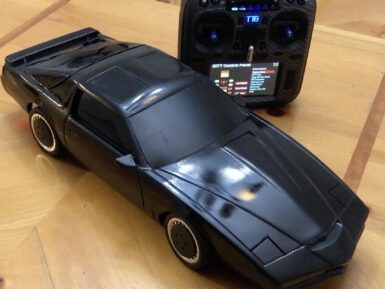
Arduino Nano Matter
The Arduino Nano Matter stems from a partnership between Arduino and Silicon Labs® to make Matter®, one of the most popular IoT connectivity standards for smart home devices, accessible to all.
Overview
Nano Matter merges Arduino’s signature ease of use with with the powerful Silicon Labs® MGM240S, wrapping the best of two worlds into one of the smallest form factors currently on the market. Experimenting with Matter-compatible devices has never been easier!
With Nano Matter, makers – at all levels of expertise – can leverage the popular Matter IoT connectivity standard to build interactive solutions, upgrade previous Nano-based projects to fully function as smart home devices, and even experiment with protocols like Zigbee® and OpenThread.
Key benefits include:
- Matter-ready for quick prototyping, thanks to hardware support and a user-friendly software layer.
- Based on the MGM240SD22VNA from Silicon Labs, a 32-bit Arm® Cortex®-M33.
- Secure Vault™ technology: enjoy industry-leading, state-of-the art security from Silicon Labs against escalating IoT threats.
- Multiprotocol connectivity enables 802.15.4 (Thread) and Bluetooth® Low Energy
- Nano-family compact size and pinout.
- Debugging over USB via SWD interface: no external debugging probe needed!
- Low energy consumption, designed for battery powered IoT devices.
Need Help?
Check the Arduino Forum for questions about the Arduino Language or how to make your own Projects with Arduino. If you need any help with your product, please contact the official Arduino User Support through our Contact us page.
 The Matter Color Light will be the only officially Matter-certified profile for the Nano Matter. Currently under certification.
The Matter Color Light will be the only officially Matter-certified profile for the Nano Matter. Currently under certification.
Tech specs
| Microprocessor | MGM240SD22VNA (32-bit Arm® Cortex®-M33 with DSP instruction and FPU) |
| Connectivity | 802.15.4 (Thread), Bluetooth® Low Energy 5.3, Bluetooth® Mesh, Matter-ready Smart Home Connectivity |
| Memory | 1536 kB Flash, 256 kB RAM |
| USB Connector | USB-C® |
| Security | Secure Vault™ High |
| Debugging | Over USB |
| UART | 2 |
| I2C | 2 |
| SPI | 2 |
| Digital I/O | 22 |
| Analog Inputs | 20 (12 bits resolution) |
| DAC | 4 (8-12 bits resolution) |
| PWM pins | 22 (A maximum of 5 pins simultaneously) |
| External interrupts | Available within all Digital pins |
| User Interface | On-board RGB LED, User pushbutton |
| Circuit operating voltage | 3.3 V |
| Input Voltage (VIN) | 5 V |
| Source Current per I/O Pin | 40 mA |
| Sink Current per I/O Pin | 28 mA |
| Clock Speed | 78 MHz |
| Antenna On-board | 2.4 GHz |
| Dimensions | 18x45 mm |
| Environmental Temperature | -40 °C to + 85 °C |
Conformities
Resources for Safety and Products
Manufacturer Information
The production information includes the address and related details of the product manufacturer.
Arduino S.r.l.
Via Andrea Appiani, 25
Monza, MB, IT, 20900
https://www.arduino.cc/
Responsible Person in the EU
An EU-based economic operator who ensures the product's compliance with the required regulations.
Arduino S.r.l.
Via Andrea Appiani, 25
Monza, MB, IT, 20900
Phone: +39 0113157477
Email: support@arduino.cc
Documentation
Learn more
Get Inspired
A Big Ben chiming clock using an Arduino Nano, a DS1302 RTC, a DFplayer Mini showing the time on a Nokia 5110 lcd with nightly cuckoo sounds

KITT (Knight Industries Two Thousand) was a fictional car based on a 1982 Pontiac Trans Am in the Knight Rider television series. KITT featured an artificial intelligence, voiced by the legendary William Daniels, and some iconic styling. Savall21 built a replica RC KITT and used Arduino boards to add sound and light effects that he can trigger with the RC transmitter. This is a custom RC car created by Savall21 using a Tamiya TT-02 kit and a resin 3D-printed body shell. The controller/transmitter is a Jumper T18, which has a customizable touchscreen interface. Savall21 programmed his own widget for that touchscreen. It mimics the fictional KITT control panel and lets the user select different sound effects and activate the iconic headlights. The T18 sends commands to an FrSky XR8 radio receiver located in the car. The FrSky receiver communicates with two Arduino Nano Every boards via the S.Port. The first Arduino controls the sound effects, which play through a DFPlayer Mini MP3 player module. The FrSky receiver simply sends a numerical code to the Arduino, which then activates the corresponding audio clip. The second Arduino drives a strip of WS2812B individually addressable RGB LEDs for the headlights and taillights. The user can control the headlights directly, while the taillights automatically come on any time the throttle is below 50%. For fans of Knight Rider and RC vehicles, this is the ultimate project. The car looks fantastic and the Arduino effects add polish to the build.










